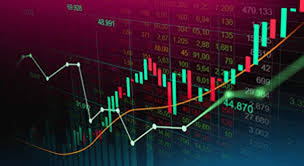
What is Forex Trading?
Forex trading, or foreign exchange trading, is the act of buying and selling currencies on the foreign exchange market with the aim of making a profit. The Forex market is the largest and most liquid financial market in the world, with an average daily trading volume exceeding $6 trillion. This vast market includes a wide range of participants, including banks, financial institutions, governments, corporations, and individual traders. For detailed insights and resources, you can visit what is trading forex fx-trading-uz.com.
The Basics of Forex Trading
At its core, Forex trading involves exchanging one currency for another. Currencies are always traded in pairs, with the value of one currency relative to another. For instance, if you trade the EUR/USD currency pair, you are exchanging Euros for US Dollars. The first currency in the pair is known as the “base currency,” while the second is called the “quote currency.” The exchange rate indicates how much of the quote currency is needed to purchase one unit of the base currency.
How Forex Trading Works
Forex trading operates 24 hours a day, five days a week, across major financial centers around the globe. The market opens in Sydney, followed by Tokyo, London, and New York. This continuous operation means that traders can respond to market events in real time, regardless of their location.
Traders can access the Forex market through brokers who provide trading platforms. These platforms allow traders to place trades, set stop-loss orders, and analyze market trends using various tools. The leverage offered by Forex brokers also plays a significant role in trading, allowing traders to control larger positions with a smaller amount of capital.
Types of Forex Analysis
To succeed in Forex trading, traders typically use one or more strategies based on analysis methods. The two primary methods of analysis are technical analysis and fundamental analysis.
Technical Analysis
Technical analysis involves examining historical price data and trading volumes to predict future price movements. Traders typically use charts and various indicators to identify patterns and trends that can provide insights into potential future price action. Common technical indicators include moving averages, Bollinger Bands, Relative Strength Index (RSI), and Fibonacci retracements.
Fundamental Analysis
In contrast, fundamental analysis focuses on the economic, political, and social factors that can influence currency values. This may include economic indicators such as Gross Domestic Product (GDP), employment figures, inflation rates, and central bank policies. Traders who utilize fundamental analysis often pay close attention to economic news releases and geopolitical events, as these can create significant volatility in the Forex market.
Forex Trading Strategies
There are numerous trading strategies that traders can employ, depending on their goals and risk tolerance. Some of the most popular strategies include:

Day Trading
Day trading involves opening and closing positions within the same trading day, taking advantage of short-term price movements. Day traders often make multiple trades throughout the day and usually do not hold positions overnight to avoid overnight risk.
Swing Trading
Swing trading is a medium-term trading strategy that involves holding positions for several days or weeks to capitalize on larger price movements. Swing traders typically use a combination of technical and fundamental analysis to determine optimal entry and exit points.
Scalping
Scalping is a high-frequency trading strategy where traders aim to make small profits from numerous trades throughout the day. Scalpers typically hold positions for a very short time, often just a few minutes, and rely heavily on technical analysis and quick decision-making.
The Risks of Forex Trading
While Forex trading can be lucrative, it also comes with significant risks. The most prominent risk is market risk, which is the potential for losses due to adverse price movements. Additionally, the use of leverage can amplify both profits and losses, making it essential for traders to use risk management strategies.
Risk Management Techniques
Effective risk management is crucial for long-term success in Forex trading. Here are some common techniques:
- Stop-Loss Orders: These orders automatically close a position when a certain price level is reached, limiting potential losses.
- Position Sizing: This involves determining the amount of capital to risk on each trade based on account size and risk tolerance.
- Diversification: By trading multiple currency pairs and instruments, traders can reduce their overall risk exposure.
Conclusion
Forex trading offers vast opportunities for those who are willing to learn and develop their skills. Understanding the complexities of the market, employing effective analysis methods, implementing sound trading strategies, and practicing robust risk management can significantly enhance one’s chances of success. As with any form of investment, continuous education and practice are key to becoming a proficient Forex trader.
Further Resources
If you’re interested in learning more about Forex trading, there are numerous educational resources available online. Consider reading trading books, participating in webinars, and utilizing demo accounts to practice trading without risking real money. By taking the time to educate yourself and develop a trading plan, you can navigate the Forex market with confidence.
